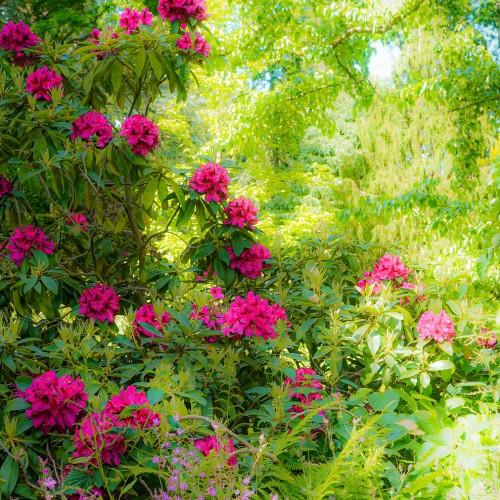
rhododendron
Rhododendron 'Ingrid Mehlquist'
Cycle:
Perennial
Watering:
Average
Hardiness Zone:
5 - 8
Flowers:
Flowers In Spring
Sun:
Full sun,part shade
Leaf:
Yes
Growth Rate:
High
Maintenance:
Moderate
Care Level:
Medium
watering
Rhododendron 'Ingrid Mehlquist' should be watered regularly, about once a week in the summer and every 10-14 days in the winter. Water enough to moisten the soil, but avoid overwatering, as rhododendrons are vulnerable to root rot. The best way to check if it needs water is to feel the soil; if it’s dry to the touch, add some water. Rhododendrons also enjoy plenty of humidity and the more humid the environment, the less they need to be watered.
sunlight
Rhododendron 'Ingrid Mehlquist' is a popular evergreen shrub species. This plant variety enjoys bright light but not direct sunlight. During the spring and summer months, it is recommended to provide it with 4-6 hours of full sun exposure per day, preferably in the morning. During the winter months, it should be kept in full shade or partial shade and not receive more than 4 hours of sunlight. If kept in too much sun during the day, it may become scorched, resulting in yellowing or browning foliage. It is essential to make sure your rhododendron has consistent moisture levels. This will ensure that it is lush, healthy, and blooming.
pruning
Rhododendron 'Ingrid Mehlquist' should be pruned in late spring or early summer, just after blooming is complete. Pruning should be light, removing only dead, damaged, or diseased growth. Be sure to leave some of the spent flower heads on the plants to gather nourishment. When pruning, avoid removing branches that flow from the central stem - instead, prune back inner branches that are no longer producing flowers or are crossing over each other. Prune back any tall leggy branches that are detracting from the shape of the plant. Also consider thinning out old wood and removing branches that are too close together.
